DIR/Floortime, a therapeutic approach, has gained recognition for its effectiveness in nurturing children’s heartfelt, cognitive, and communicative development. Developed by Dr. Stanley Greenspan and Serena Wieder, this distinctive method utilizes child-led play activities to cultivate various skills, from sensory integration to social-heartfelt competencies. Yet, while its merits are widely acclaimed, understanding the intricate mechanisms behind its success poses a captivating challenge. Let’s investigate the core principles, beneficial aspects, and potential limitations of DIR/Floortime and uncover the essence of its impactful influence on child development.
Key Takeaways
- DIR/Floortime is a relationship-based therapy designed for children on the autism spectrum.
- It emphasizes Developmental, individual differences, and Relationship-based principles to support child growth.
- The therapy uses meaningful play to enhance motor skills, sensory integration, and social-emotional skills.
- It involves 2—to 5-hour sessions with professionals such as child psychologists, special education teachers, and critical parental involvement.
- The approach nurtures emotional development, self-regulation skills, and sentimental expression through child-led activities.
Understanding DIR/Floortime
Venturing into the realm of DIR/Floortime, it’s essential to understand that this approach is fundamentally a relationship-based therapy, often used in cases involving children on the autism spectrum. The DIR model, focusing on Developmental, unique differences, and Relationship-based principles, is applied in the practical approach of Floortime to support children’s growth. Meaningful play improves motor skills, sensory integration, and social-emotional skills. The DIR/Floortime model centers around parent-child interactions, specifically tailored to the child’s developmental level. This focus on personal growth allows for expanding communication circles, fostering a sense of belonging that is both nurturing and enabling.
Developed in the 1980s by Dr. Stanley Greenspan and Serena Wieder, this developmental model emphasizes emotional development. This focus on emotion highlights the importance of considering the child’s unique feelings, desires, and reactions to their environment.
Floortime sessions can last 2 to 5 hours and promote two-way communication and the expression of complex emotional ideas. These sessions are typically facilitated by professionals such as child psychologists, special education teachers, and therapists. However, parental involvement is a fundamental pillar of the DIR/Floortime model. Parents are encouraged to learn and implement the techniques, fostering a collaborative approach to their child’s developmental path.
Core Principles of DIR/Floortime
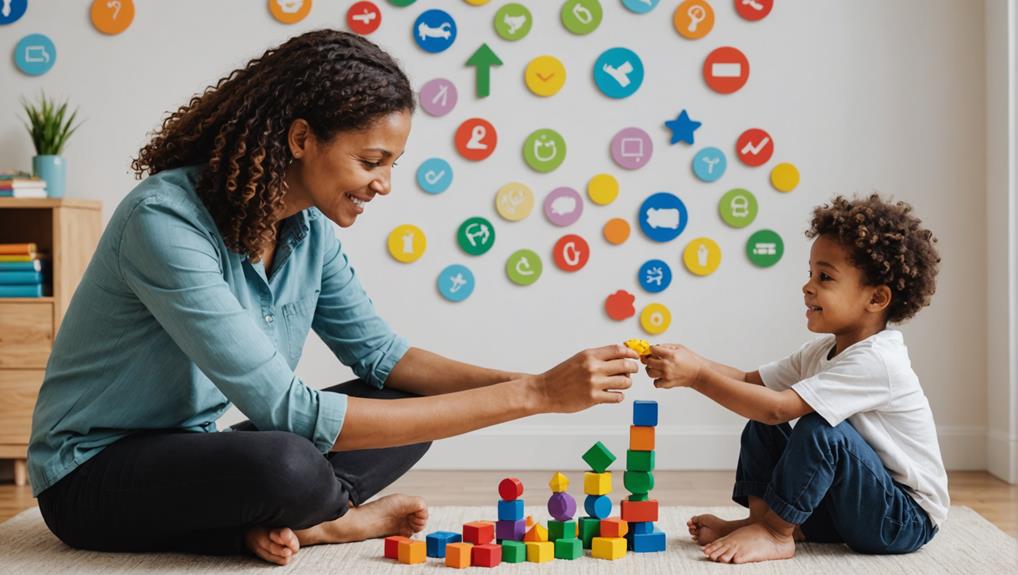
Within the DIR/Floortime model framework, several core principles serve as guideposts for effective therapeutic intervention. Emphasizing the child’s interests, the model nurtures heartfelt interactions that resonate with their distinct emotional world. By tuning into their emotional patterns, practitioners can effectively navigate the child’s developmental abilities, promoting healthy social-emotional growth. This aligns with play therapy techniques that concentrate on emotional discovery and social development, using activities children naturally participate in.
This approach is not about compelling the child to conform to preset growth paths but rather about challenging them at the appropriate developmental level. By employing scaffolding techniques, practitioners can steer the child in broadening their circles of communication. This supportive framework facilitates the child’s path toward achieving the six functional and emotional developmental capacities pivotal to the DIR/Floortime approach.
This empathetic and analytical model acknowledges the child’s distinctiveness, fostering a sense of inclusion. It’s not solely about reaching specific milestones but about nurturing the child’s genuine self, encouraging them to engage in meaningful emotional connections. The DIR/Floortime model’s principles embody the essence of personalized and compassionate therapeutic intervention.
Beneficial Aspects of DIR/Floortime
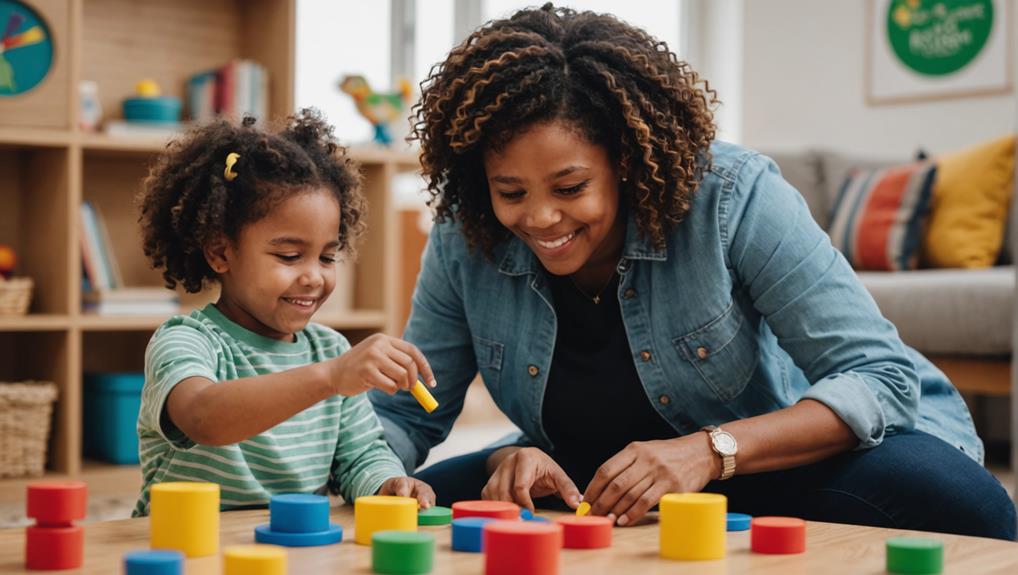
The advantageous aspects of DIR/Floortime reach across various developmental domains, including feelings, communication, and cognitive growth. This method nurtures a child’s feelings development through playful interactions and encourages improved communication skills by emphasizing relationship-building. Integrating elements of sensory integration and personalized activities, DIR/Floortime enables the adaptation of play experiences to aid the child’s specific sensory requirements, fostering better involvement and participation. Moreover, by highlighting child-led activities, DIR/Floortime stimulates cognitive growth, catering to every person’s distinctive developmental path.
Boosting Emotional Development
Recognizing the significant role of feelings in a child’s development, the implementation of DIR/Floortime serves as a potent tool in fostering psychological growth. This approach, centered on building solid and heartfelt connections and relationships, aids in developing self-regulation skills. It promotes sentimental expression in a safe and supportive environment, allowing children to navigate complex sentiments and engage in meaningful interactions. Child-led activities and techniques, such as those found in play-based therapy, further enrich the DIR/Floortime approach, stimulating creativity and problem-solving skills while reducing tension and improving self-esteem.
The benefits of DIR/Floortime in elevating emotional development can be seen in the following aspects:
- DIR/Floortime enriches emotional intelligence by encouraging children to investigate their interests and emotions, fostering a deeper understanding of self and others.
- Following the child’s lead in play and interaction while simultaneously challenging them at just the right level supports emotional growth.
- DIR/Floortime facilitates the development of emotional communication, encouraging children to express their feelings freely and confidently.
Respecting diverse interests and promoting social skill development, methods similar to those used in play therapy can be integrated into DIR/Floortime. Ultimately, DIR/Floortime is more than a therapeutic approach; it is a way of relating that nurtures emotional development while cultivating a sense of belonging. The focus on relationships and the child’s lead sets the stage for healthy emotional growth, reinforcing the undeniable link between emotional well-being and comprehensive development.
Enhancing Communication Skills
As we delve deeper into the advantageous aspects of DIR/Floortime, it becomes apparent how crucial this approach is in enriching children’s communication skills. This model is rooted in the belief that back-and-forth interactions, particularly those stemming from the child’s interests, can significantly foster communication development.
DIR/Floortime emphasizes relational connections and bonds, supporting children in expanding their communication circles and improving social interaction. This approach encourages joint attention, sentiment ideas, and intricate communication through play-based interactions. Regular practice can lead to remarkable improvements in self-regulation, intimacy in relationships, and two-way communication skills.
| Relational Connections | Back-and-forth Interactions | Joint Attention |
|---|---|---|
| Fosters understanding and empathy | Stimulates dialogue and response | Improves focus and engagement |
| Builds strong relationships | Improves communication skills | Encourages shared interest |
| Supports emotional development | Encourages social interaction | Promotes complex communication |
DIR/Floortime is an inviting approach for those desiring a sense of belonging. It is built on a foundation of empathy, understanding, and acceptance. Focusing on relational connections and joint attention paves the way for enriched communication skills in children.
Encouraging Cognitive Growth
Promoting cognitive growth forms a cornerstone in the DIR/Floortime approach, emphasizing the evolution of unique developmental capacities. This model encourages cognitive growth by focusing on distinct abilities, creating a sense of belonging for each participant. By engaging in problem-solving interactions, new skills are acquired, and mental abilities are improved, paving the way for a more analytical approach to daily challenges.
The DIR/Floortime model includes activities that promote sensory development and cognitive challenges, fostering a knowledgeable understanding of the world. Some specific strategies include:
- It stimulates cognitive development through play with typically developing peers.
- We are conducting sessions lasting 2-5 hours for extensive cognitive stimulation.
- I am using tailored activities to encourage engagement with others and sensory development.
Incorporating outdoor activities into these sessions, like nature scavenger hunts or bird-watching, can promote cognitive growth and sensory development through hands-on, experiential learning.
The empathetic approach of DIR/Floortime allows participants to feel accepted, enhancing their readiness to engage in activities that support cognitive growth. The unique developmental capacities of each participant are nurtured, paving the way for them to reach their full potential. This method underscores the importance of cognitive growth, emphasizing that it is about learning new facts and understanding and interpreting the world around us.
DIR/Floortime vs ABA
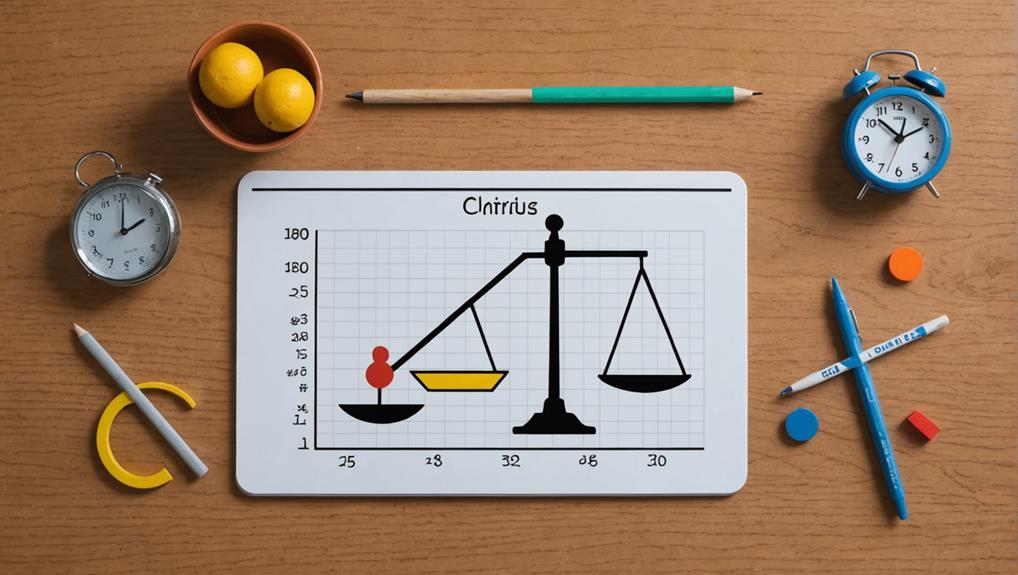
In Autism Spectrum Disorders, two prominent methods for enhancing developmental skills have emerged: DIR/Floortime and Applied Behavior Analysis (ABA). Both approaches have distinct advantages and philosophies; DIR/Floortime focuses on nurturing relationships and personal connections to stimulate development, while ABA emphasizes modifying behaviors through reinforcement techniques.
The choice between DIR/Floortime and ABA should not be seen as black and white but should consider the foster child’s needs and preferences. In our quest for a society where everyone feels a sense of belonging, it’s important to remember that each child is exceptional and requires customized strategies for the best growth.
From this perspective, some families and professionals have chosen an integrated approach that combines DIR/Floortime and ABA elements. This method is more all-encompassing and accommodates the various aspects of an individual’s development.
A multidisciplinary team approach can also be advantageous, where experts from different fields incorporate DIR/Floortime and ABA strategies. This collaborative effort ensures thorough support, strengthening the groundwork for every child’s successful developmental voyage.
Exploring Additional Resources
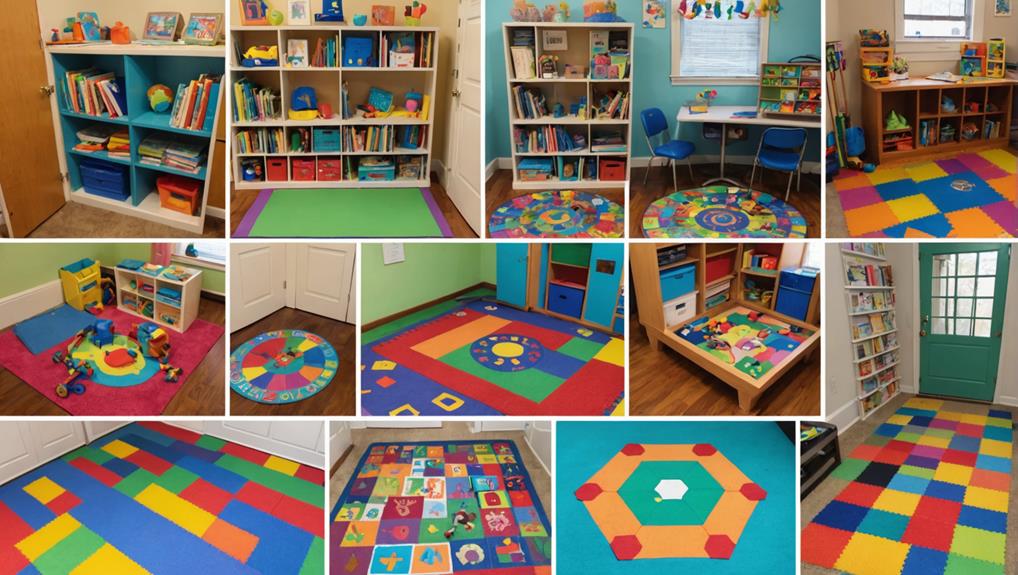
It is essential to investigate the abundance of additional resources available to ensure a thorough comprehension and practical application of the DIR/Floortime approach. Esteemed child psychiatrist Dr. Stanley Greenspan, the originator of Floortime, supported this developmental, unique-characteristic, relationship-based approach, highlighting its significance in nurturing emotional and cognitive development in children.
Extra resources can enhance your grasp of the DIR/Floortime approach and improve its utilization. The International Council on Development and Learning (ICDL) is a valuable resource, offering a diverse course catalog that delivers education and training on Floortime.
Here are some resources to explore:
- The official website and writings of Dr. Stanley Greenspan.
- ICDL’s course catalog and resources on Floortime.
- Understanding the six functional, emotional, and developmental capacities is vital to Floortime.
These resources offer a compassionate, thoughtful, and well-informed viewpoint on Floortime. They promote a sense of inclusion by emphasizing the significance of a child-led approach, encouraging a child’s initiative and involvement. By utilizing these resources, you can contribute effectively to a child’s emotional and cognitive development, embodying the essence of the DIR/Floortime approach.
Floortime: An Overview
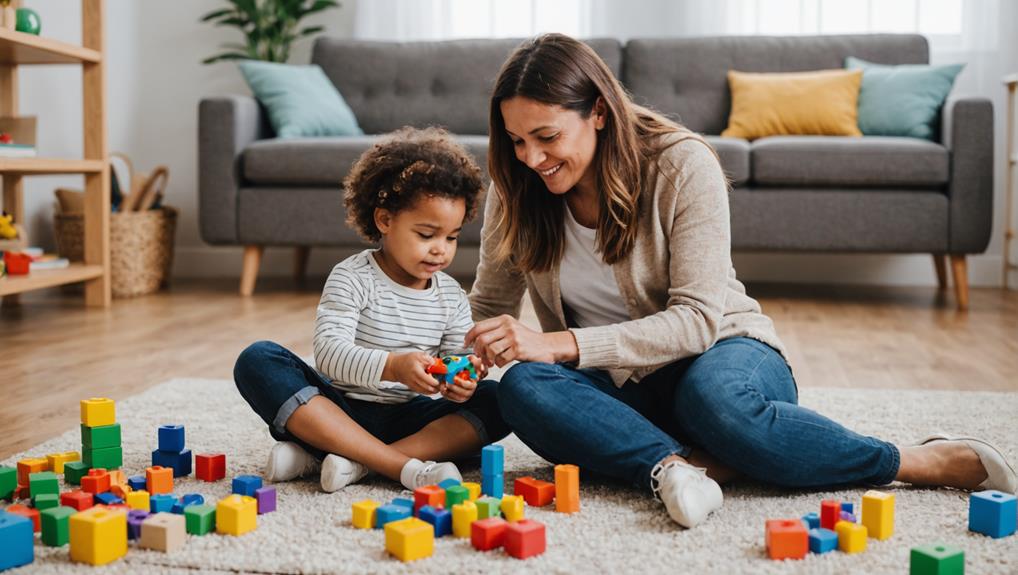
Floortime, a relationship-based therapy approach, primarily serves children with Autism. Developed by Dr. Autismy Greenspan and Serena Wieder in the 1980s, Floortime is based on the Developmental, Personal-difference, Relationship-based (DIR) model for human development. It focuses on heartfelt and developmental growth by building relationships through interaction.
Floortime engages the child at their developmental level and builds upon their strengths. The aim is to expand communication circles, fostering two-way communication. It involves parents in a pivotal role, encouraging them to play and interact with their autistic child at their level of interest. This involvement guarantees the child’s comfort and encourages them to engage more openly.
Unlike traditional therapy methods, Floortime emphasizes following the child’s lead. This approach challenges the autistic child in a supportive environment that promotes their heartfelt and intellectual growth. It allows for the natural unfolding of skills in a way that makes sense to the child, making it an empathetic, analytical, and knowledgeable therapy approach. The sense of belonging that Floortime creates for the child and their family is invaluable in their growth adventure.
Key Milestones in Floortime

Understanding the critical milestones in Floortime, such as self-regulation and complex communication, is essential to guarantee the successful implementation of this intervention strategy. The path towards self-regulation fosters a child’s engagement with their surroundings while enhancing complex communication and propels them to interact more meaningfully. Ls now investigate these milestones, their significance, and how they contribute to a child’s growth.
Self-Regulation in Floortime
In the Floortime approach, self-control is often the initial critical milestone we encounter. This entails the child’s ability to master their feelings and behavior in diverse situations, fostering a sense of security and belonging.
Through self-control, a child can engage with their environment in a balanced manner, marking a significant step in their developmental voyage. This engagement paves the way for forming close relationships, the next milestone characterized by strong emotional bonds with caregivers and peers.
- Self-control: An ability that strengthens the child to assert authority over their feelings and behavior, allowing them to interact with their surroundings in a regulated manner.
- Engagement: This refers to the child’s active participation and interaction with their environment, which aids in developing self-control.
- Closeness: As children mature, they form emotional bonds with caregivers and peers, enriching their sense of belonging.
Two-way communication is another notable milestone in Floortime, underscoring the child’s capacity to engage in reciprocal interactions with others. As they progress, complex communication becomes increasingly significant, reflecting more advanced thoughts, feelings, and ideas. Here, the child’s self-control, engagement, and closeness play a fundamental role in shaping their communicative abilities.
Enhancing Complex Communication
In child development, intricate communication is a cornerstone of the Floortime approach. This method emphasizes the importance of enhancing intricate communication skills through a child-led, interactive approach. This inclusive strategy invites parents and caregivers into a child’s world, fostering a sense of belonging and shared attention.
Floortime’s unique approach presents a path towards sentimental thinking and two-way communication. By following the child’s lead, whether in play or conversation, caregivers can help foster an environment that encourages interaction and the development of abstract, logical thinking. This active engagement resonates with the child, creating a special bond that is the foundation for developing intricate communication skills.
Moreover, Floortime aims to expand the child’s communication circles. The child begins understanding and participating in intricate communication by promoting shared attention and interaction. This progress is marked as a critical milestone in the Floortime approach, and it is achieved in an environment that values the child’s perspectives and sentiments.
To conclude, Floortime’s empathetic, analytical, and knowledgeable approach to enhancing intricate communication offers the child a secure path toward meaningful interaction and logical thinking.
Implementation of Floortime
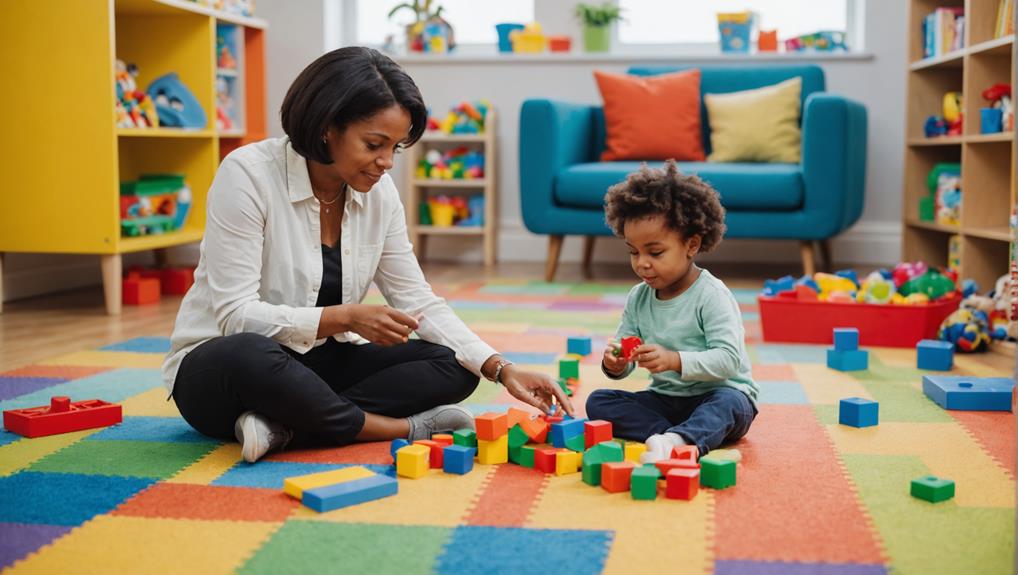
Implementing Floortime requires a commitment of 2 to 5 hours of play-based interactions between an adult and a child, mainly in a peaceful environment that encourages focus and engagement. This approach prioritizes following the child’s lead while promoting reciprocal exchanges for shared attention.
A significant aspect of Floortime’s implementation is parental involvement. This hands-on role fosters a sense of belonging in the family and enhances the child’s emotional development.
While implementing Floortime, remember the following:
- Create a tranquil environment: This encourages concentration and allows the child to lead the interaction.
- Foster back-and-forth interaction: This practice expands the child’s communication circles and promotes engagement.
- Encourage parental involvement. Parents play a crucial role in the child’s learning and development during floor time activities.
History of Floortime

In the 1980s, Stanley Greenspan, M.D., and Serena Wieder, PhD, pioneered Floortime as a groundbreaking approach to supporting children with autism Autismvelopmental autism. Autismore of this original technology is rooted in the Developmental, Personalized Difference, Relationship-Based model (DIR), emphasizing the impactful power of relationships and tailored support.
Floortime has always prioritized children’s emotional growth, recognizing the inherent value of each child’s journey. It acknowledges that every child has unique strengths and challenges, necessitating a customized approach for adequate support. This principle is the foundation of Floortime, reinforcing the value of individuality and the importance of fostering a sense of belonging.
The essence of Greenspan and Wieder’s work lies in the concept of ‘play-based interactions.’ By engaging children in activities they enjoy, Floortime facilitates a natural learning environment. This encourages children to reach their full potential by developing essential emotional and social skills.
As we explore Floortime’s history, we appreciate the thoughtfulness, empathy, and thoroughness embedded in its design. Greenspan and Wieder’s pioneering work has illuminated a path for numerous children, helping them overcome their developmental challenges and achieve their full potential.
Providers of Floortime Services

Building on the rich legacy of Greenspan and Wieder, a varied range of professionals are equipped to offer Floortime services today. These professionals include child psychologists, special education teachers, speech therapists, and occupational therapists who have undergone rigorous DIR/Floortime approach training.
Their work revolves around facilitating play-based interactions with children with autistic Autism developmental challenges, focusing on building relationships and crafting an autism environment that encourages development. However, the prFloortime services aren’t just for these professionals.
- Parents and caregivers can also acquire these techniques and implement Floortime at home, extending the benefits beyond therapy sessions.
- Professionals often collaborate with other experts to provide a thorough support network for the child, and faFamilyDIR/Floortime practitioners can also share their knowledge and expertise with other professionals, enhancing the overall quality of care.
The DIR/Floortime Model Explained
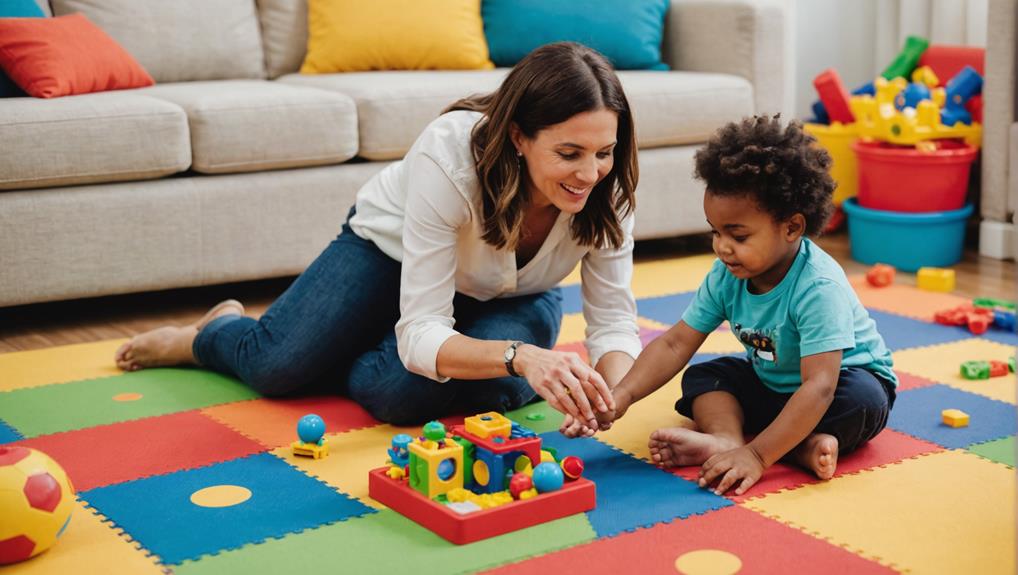
The DIR/Floortime Model, a relationship-based developmental approach, has been a game-changing tool for children with autism Autismvelopmental autism. Autismrinciples, benefits, and implementation methods are vital to Autismpto helping’s cognitive and emotional development. In this discussion, we will seek to expand our understanding of these pivotal aspects to appreciate the inclusive nature of the DIR/Floortime Model.
Understanding DIR/Floortime Principles
The DIR/Floortime model has emerged as an influential approach to nurturing children’s healthy social, mental, and intellectual capacities. This model is grounded in a profound appreciation for every child’s uniqueness, recognizing that each developmental stage and the relationships formed during those stages are pivotal to a child’s growth.
The principles of DIR/Floortime are encapsulated in three core tenets:
- Recognition of distinct differences and developmental stages
- Emphasis on relationships as a key to development
- The use of play-based interactions as a vehicle for learning and growth.
The model is built on the understanding that children are not just passive recipients of care but active participants in the learning process. Through play-based interactions, children are encouraged to investigate, explore, and problem-solve, thereby expanding their circles of communication and cognitive abilities. DIR/Floortime practitioners work alongside children, following their lead while gently challenging them to reach beyond their comfort zones. This approach fosters a nurturing and stimulating environment, promoting learning and the child’s holistic development.
Benefits of DIR/Floortime
With a strong foundation in understanding the principles of the DIR/Floortime model, it becomes clear how this approach can significantly benefit a child’s development differently. This model promotes sensory, motor, psychological, cognitive, and communication development in children, especially those with developmental disorders.
The benefits of DIR/Floortime are numerous. It helps children make sense of their world, improving day-to-day skills like tying shoelaces or understanding social cues. The model improves psychological and cognitive development, facilitating better mutual communication skills. The therapy typically involves 2-5 hours of interactive playtime, problem-solving interactions, and specialized activities to stimulate a child’s developmental progress.
Here is a brief overview of the benefits of DIR/Floortime:
| Development Area | Benefit | Example |
|---|---|---|
| Sensory and Motor | Enhances physical capabilities | Improves skills like tying shoelaces |
| Psychological and Cognitive | Stimulates psychological and cognitive growth | Facilitates understanding of social cues |
| Communication | Elevates mutual communication skills | Encourages interaction during playtime |
DIR/Floortime provides a nurturing, inclusive environment for children to reach their developmental milestones.
Implementing DIR/Floortime Methods
Delving into the application of the DIR/Floortime model, we discover a play-based approach that spans 2-5 hours of interactive sessions between a child and an adult. These play-based interactions are crafted to nurture emotional, cognitive, and communication development while offering sensory growth opportunities.
This method includes:
- Problem-solving interactions to teach new skills and bolster the child’s progress.
- Tailored activities for sensory development to captivate the child more effectively.
- Playdates with typically developing children to practice and apply new skills.
The DIR/Floortime model is more than just a therapeutic approach; it is a community where every child is valued and understood. The focus is not solely on addressing perceived issues but more on embracing the distinct qualities of each child. By facilitating problem-solving interactions, the model enables children to investigate, learn, and evolve at their own pace. Children can flourish in their sensory development and communication skills with the assistance of nurturing adults. The utilization of DIR/Floortime methods is a dedication to providing a nurturing environment where every child experiences a sense of belonging and acceptance.
Who Uses the DIR/Floortime Model?
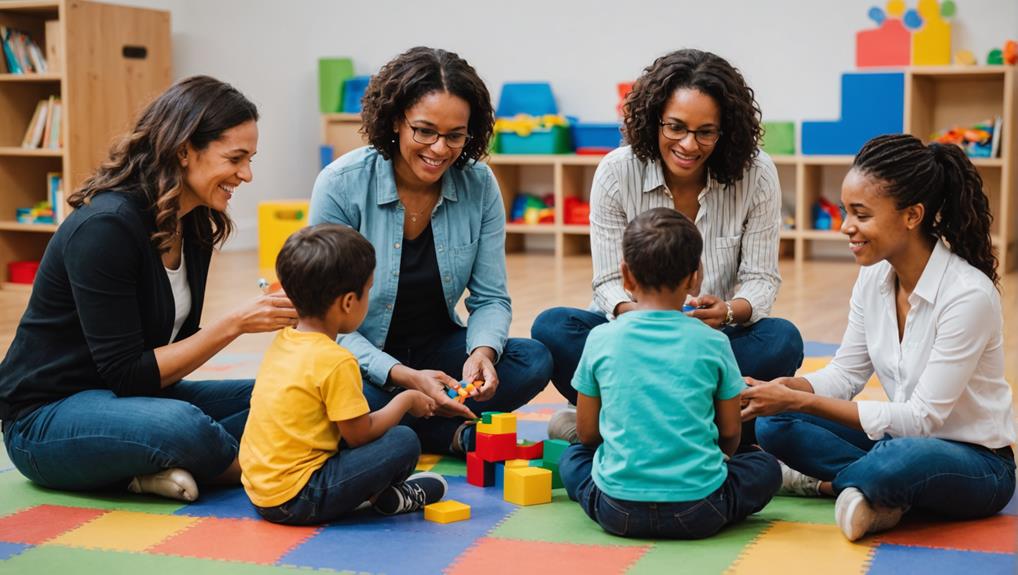
The DIR/Floortime model‘s flexibility allows it to be used by a diverse group of individuals. Child psychologists and special education teachers utilize this model to provide personalized, play-based interactions for children with autism Autismher developmental disorders. Often certified by the Interdisciplinary Council on Development and Learning (ICDL), these professionals are equipped with the techniques and Autismgies necessary for effectively implementing the DIR/Floortime approach.
Parents and caregivers also form a significant portion of the DIR/Floortime users. They are encouraged to learn and apply this model’s methods, fostering a nurturing environment that promotes their child’s growth. The early intervention this model provides is essential in helping children reach developmental milestones, making it a valuable tool for families facing the challenges of developmental disorders.
Speech and occupational therapists also use the DIR/Floortime model. By incorporating these methods, they offer a thorough, holistic approach to therapy, ensuring each child’s needs are addressed. The DIR/Floortime model’s wide application reflects its adaptability, making it a widely used resource in child development and learning.
Finding a DIR/Floortime Practitioner

Choosing the appropriate DIR/Floortime specialist can be a significant decision in a child’s developmental path. It’s essential to find a specialist certified by the Interdisciplinary Council on Development and Learning (ICDL), as this ensures they’ve undergone rigorous training and meet high professional standards.
Specialists can come from diverse fields, including psychology, speech pathology, occupational therapy, and education. Their varied backgrounds contribute to the comprehensive approach of DIR/Floortime, which considers the child’s distinct developmental profile and nurtures their overall progress.
An essential aspect of DIR/Floortime is parental involvement. The right specialist will:
- Equip you with knowledge and training.
- Offer continuous support and encouragement.
- Cultivate a strong, collaborative relationship with you.
Directories and organizations can help you find certified specialists. Cost considerations, including additional therapy services and funding sources like NDIS plans, should be considered.
Finding a suitable DIR/Floortime specialist is a voyage, but with thorough research and reflection, it’s a step towards a brighter developmental future for your child. You’re not alone in this expedition; together, we can find the optimal path for your child’s growth and development.
Conclusion
DIR/Floortime is an inventive, relationship-based therapy model that promotes heartfelt, communicative, and cognitive development. Its child-led, tailored interventions and parental involvement offer a distinct approach to nurturing a child’s comprehensive well-being. Despite differences with ABA, its efficacy is remarkable. Finding a DIR/Floortime practitioner can open up a fresh path for progress. As research continues, the potential of this model to revolutionize therapeutic interventions for children is truly significant.

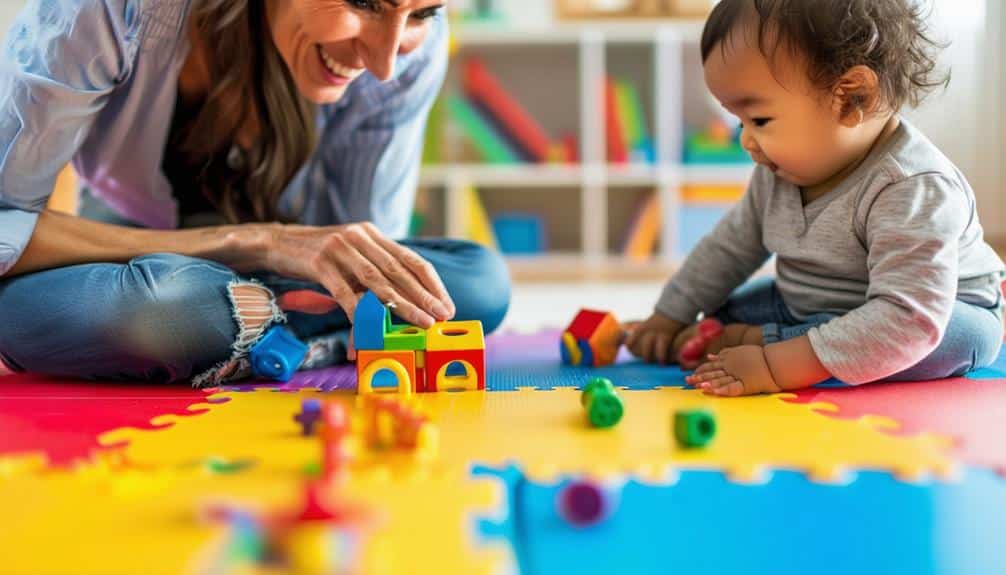
Recent Comments